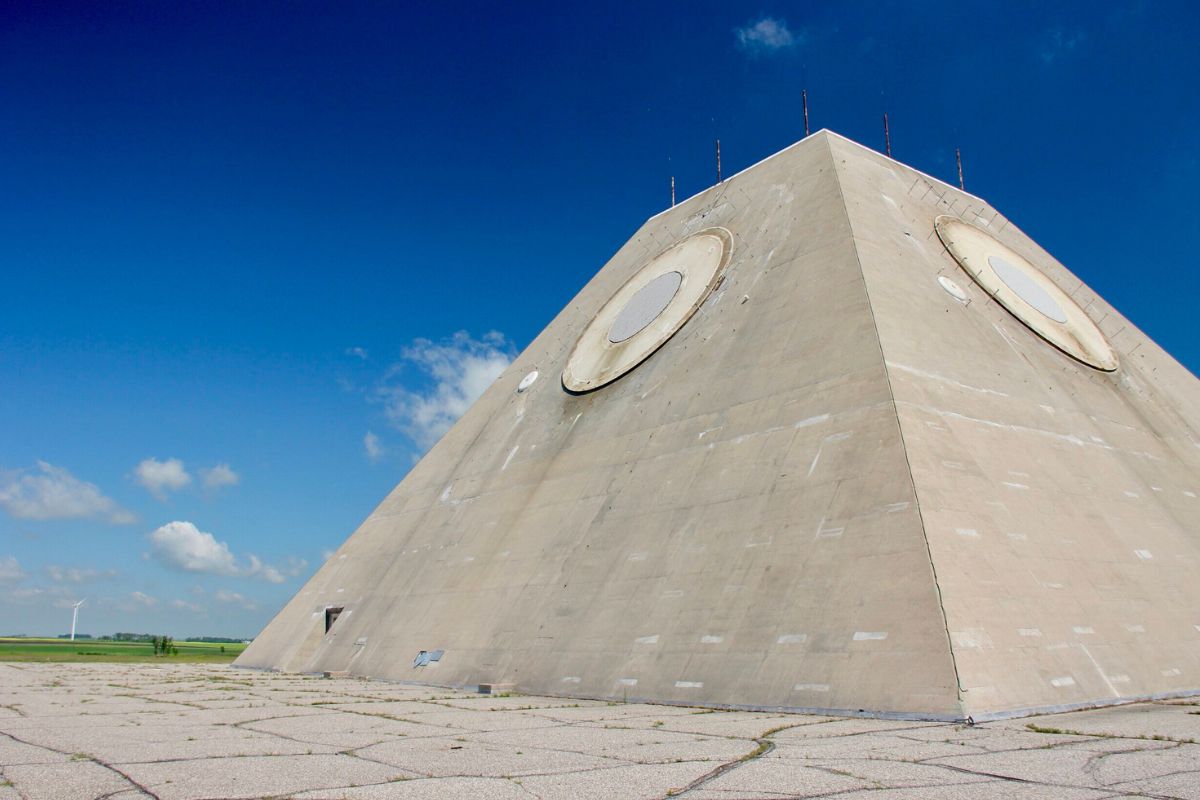North Dakota’s Mysterious Cold War Pyramid

Have you ever heard of a Cold War pyramid in North Dakota? Tucked away in the vast plains, this strange structure stands as a reminder of a tense era. Built during the 1970s, the pyramid was part of the Safeguard Program, designed to protect the United States from potential nuclear threats. Its unique shape and purpose have intrigued many, sparking curiosity about its history and function. Today, the pyramid is no longer in use, but it remains a fascinating piece of Cold War history. Visitors can explore the area and imagine what life might have been like during those uncertain times. Whether you're a history buff or just curious about unusual landmarks, this pyramid offers a glimpse into a past filled with secrets and strategies.
What is the North Dakota Cold War Pyramid?
In the vast plains of North Dakota, a peculiar structure stands as a relic of the Cold War era. Known as the Stanley R. Mickelsen Safeguard Complex, this pyramid-shaped building was part of a missile defense system designed to protect the United States from potential Soviet attacks. Its unique architecture and historical significance make it a fascinating site to explore.
Why Was the Pyramid Built?
During the Cold War, tensions between the United States and the Soviet Union were at an all-time high. The pyramid was constructed as part of the Safeguard Program, a defense initiative aimed at intercepting incoming ballistic missiles. This program was a response to the growing threat of nuclear warfare, and the pyramid served as a radar facility to detect and track missiles.
Where Can You Find This Mysterious Structure?
- Stanley R. Mickelsen Safeguard Complex
Located near Nekoma, North Dakota, this complex is home to the iconic pyramid. Although it is no longer operational, the site remains a point of interest for history enthusiasts and curious travelers. The pyramid's distinct shape and the surrounding structures offer a glimpse into the past.
What Makes the Pyramid Unique?
The design of the pyramid is unlike any other military installation. Its geometric shape and the technology housed within were cutting-edge for its time. The structure was equipped with advanced radar systems capable of tracking multiple targets simultaneously, showcasing the technological prowess of the era.
Is the Pyramid Open to the Public?
While the complex is not officially open for tours, visitors can view the exterior from a distance. The surrounding area provides a stark contrast to the pyramid's futuristic design, making it a striking landmark against the rural landscape. Those interested in Cold War history often make the trek to see this enigmatic structure.
How Has the Pyramid Influenced Popular Culture?
The North Dakota pyramid has captured the imagination of many, inspiring stories and theories about its purpose and significance. Its mysterious aura and unique appearance have made it a subject of intrigue in documentaries and articles, further cementing its place in history.
What is the Future of the Pyramid?
Discussions about the future of the pyramid continue, with some advocating for its preservation as a historical site. Its significance as a Cold War relic and its architectural uniqueness make it a candidate for conservation efforts. Whether it will be preserved or repurposed remains to be seen.
Reflecting on North Dakota's Cold War Relic
North Dakota's Cold War pyramid stands as a unique reminder of a tense period in history. This pyramid-shaped structure, part of the Safeguard Program, was designed to detect and intercept incoming missiles. Though it never fully served its intended purpose, the site offers a glimpse into the military strategies of the past. Today, it attracts curious visitors and history enthusiasts eager to learn about its mysterious past.
The pyramid's architecture and the surrounding landscape create an eerie yet fascinating atmosphere. Exploring this relic provides insight into the technological advancements and political tensions of the Cold War era. While the site remains largely abandoned, its story continues to captivate those interested in military history. Visiting this enigmatic landmark offers a chance to reflect on the complexities of the past and appreciate the strides made toward global peace.

